Make sure to join my list for Weekly Tips and Recipes to Your Inbox
14 Breathtaking Front Yard Hydrangea Landscaping Ideas
I’ve been slowly transforming my front yard into a beautiful place. One idea I keep coming back to is adding hydrangea landscaping for those big blooms that brighten up everything around them.
But the more I read, the more confused I became, do you prune them? When? Will they still flower if you mess it up? I realized quickly that planting hydrangeas isn’t just a matter of sticking them in the ground and hoping for the best. There’s a bit of an art to it, especially if you’re working with older landscaping or varieties that need specific care.
One year, a landscaper cut all the hydrangeas down in early spring, and sure enough, not a single bloom appeared that season. I later learned that certain types, like big-leaf hydrangeas (Hydrangea macrophylla), bloom on old wood.
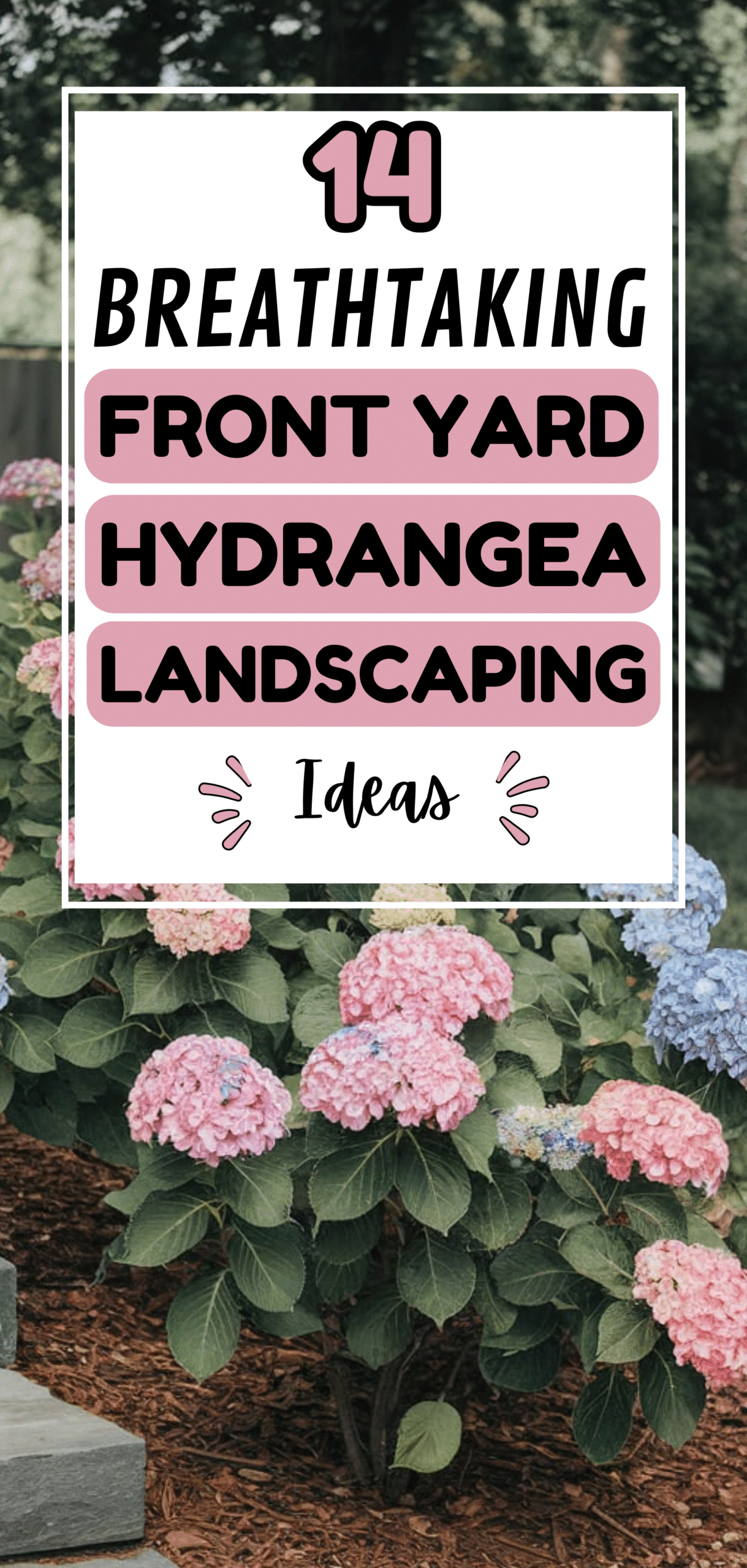
That means if you prune in spring, you’re basically snipping off the future flowers. Lesson learned! I also discovered that your climate zone plays a huge role.
Here in my city, the deep winter freezes can kill back stems, causing hydrangeas to start fresh from the ground up. Some varieties, like Endless Summer or BloomStruck, are better suited to this kind of recovery, while others need a gentler touch with pruning.
After asking around and reading countless gardening threads, I finally landed on the right approach. I now prune my hydrangeas lightly, right after they bloom, leaving as much of the healthy stems as possible.
This gives them a chance to set buds for next year while keeping their shape tidy. I also plan to mix in a few new plants in complementary colors, adjusting the soil pH to get those soft pinks and blues just right.
With the right timing and a bit of patience, hydrangea landscaping has turned from a mystery into one of the most rewarding parts of my front yard.
Come summer, those showy blossoms are the first thing people notice, and I love that they feel like a little floral welcome mat right outside my door.
14. Hydrangea Hedge Border for Natural Framing
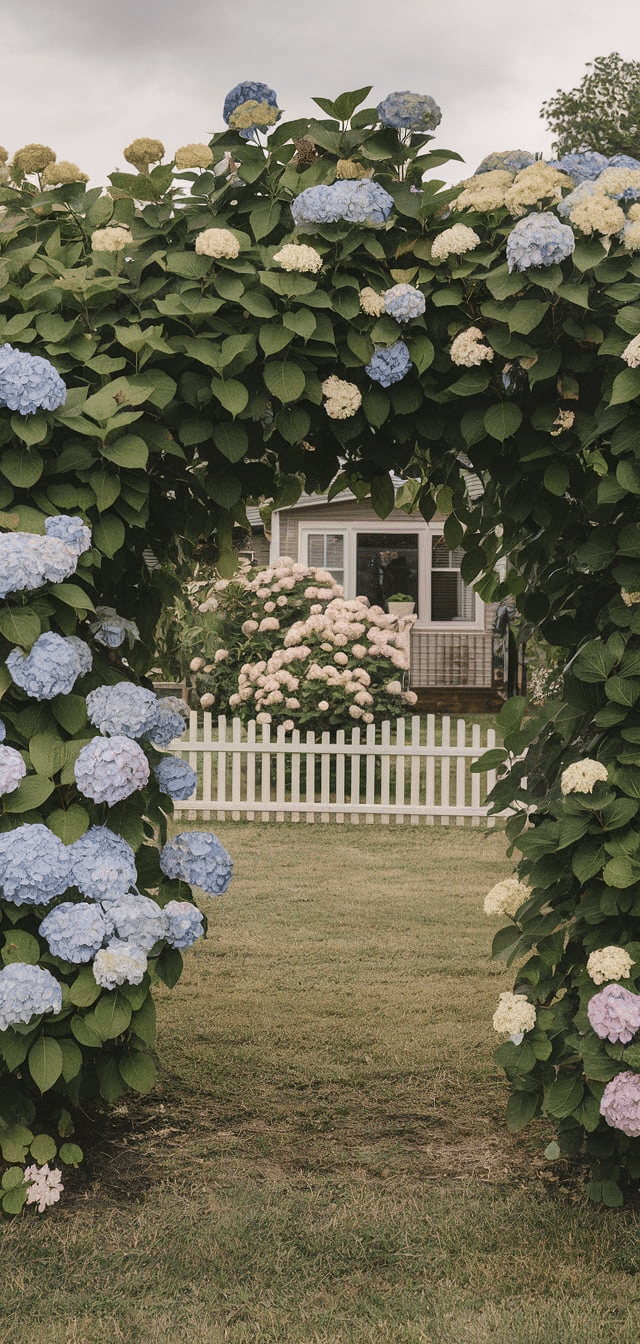
Create a dense hedge along your driveway or walkway using Hydrangea paniculata or Hydrangea arborescens.
Tips:
- Space plants 3–5 feet apart
- Prune annually in late winter to maintain shape
- Add boxwood or hostas at the base for foliage contrast
13. Foundation Planting with Mixed Hydrangea Landscaping
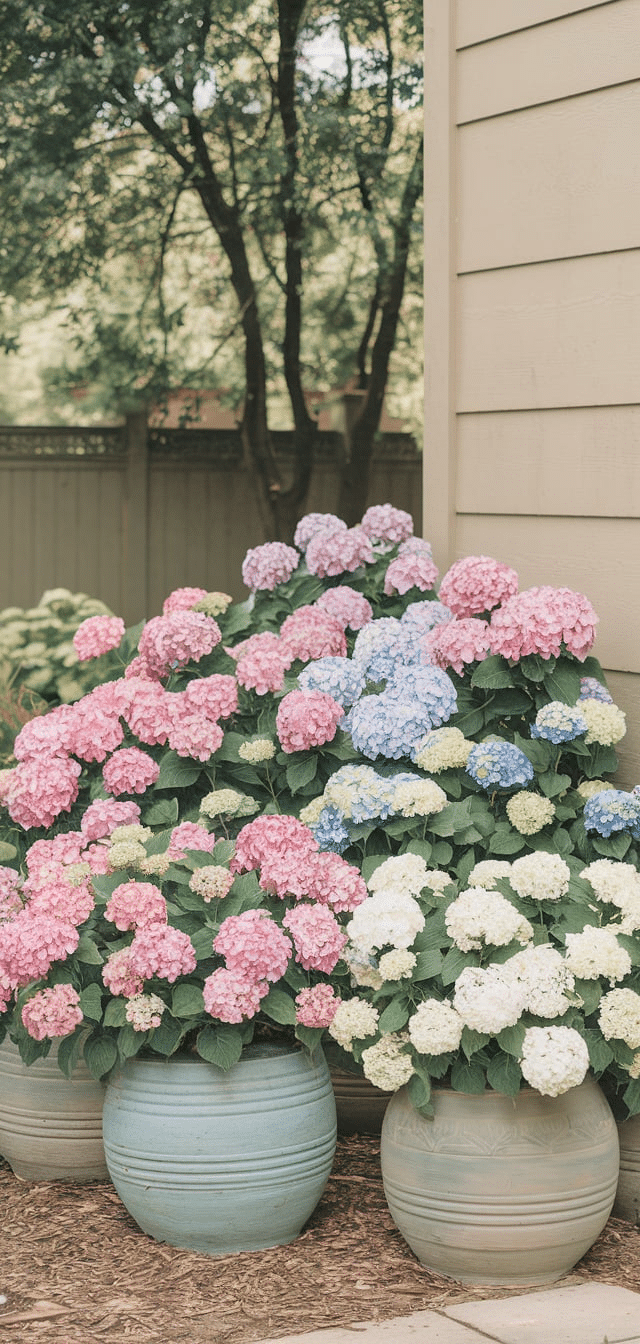
Use a blend of hydrangeas with different bloom shapes and colors to frame your home’s foundation without overwhelming it.
Tips:
- Use compact varieties like Little Lime or Bobo for tight spaces
- Place taller hydrangeas at corners for balance
- Mulch well to retain moisture and reduce weeds
12. Accent Tree Underplanting with Hydrangea Landscaping
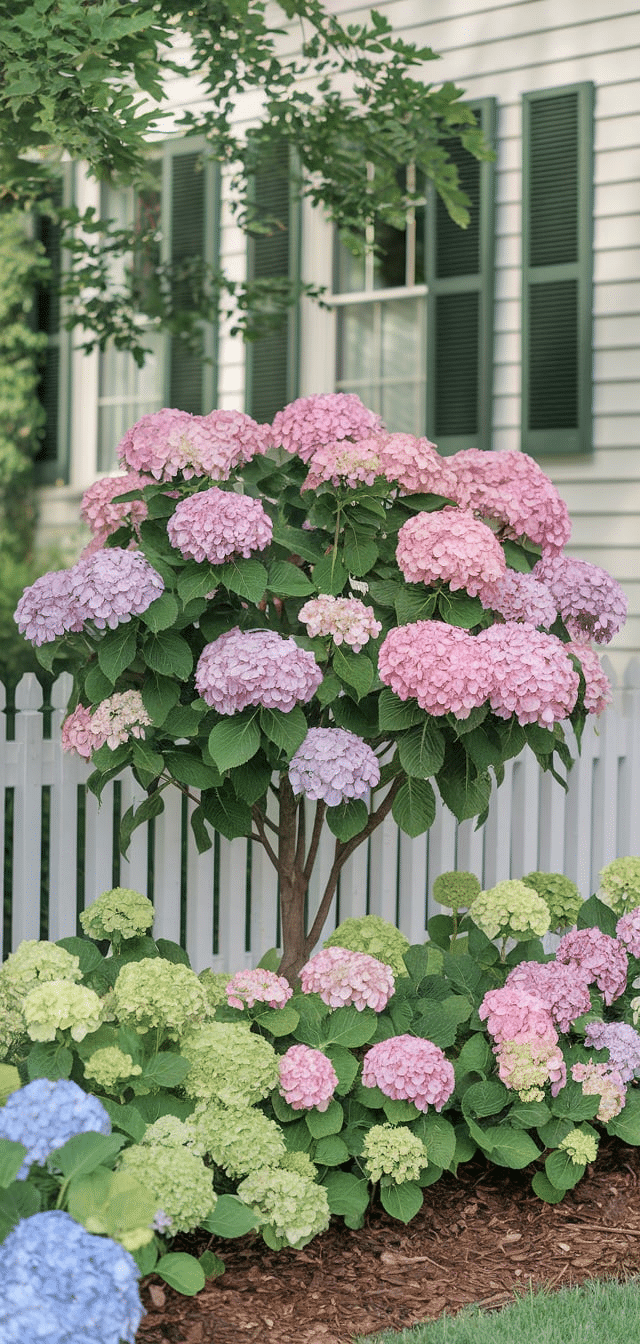
Underplant ornamental trees like dogwoods or crepe myrtles with low-growing hydrangeas for a layered focal point.
Tips:
- Choose shade-tolerant types like Hydrangea macrophylla
- Leave ample space around the tree trunk for root breathing
- Use a curved bed shape to enhance visual flow
11. Hydrangea Landscaping Island Bed in Lawn Center
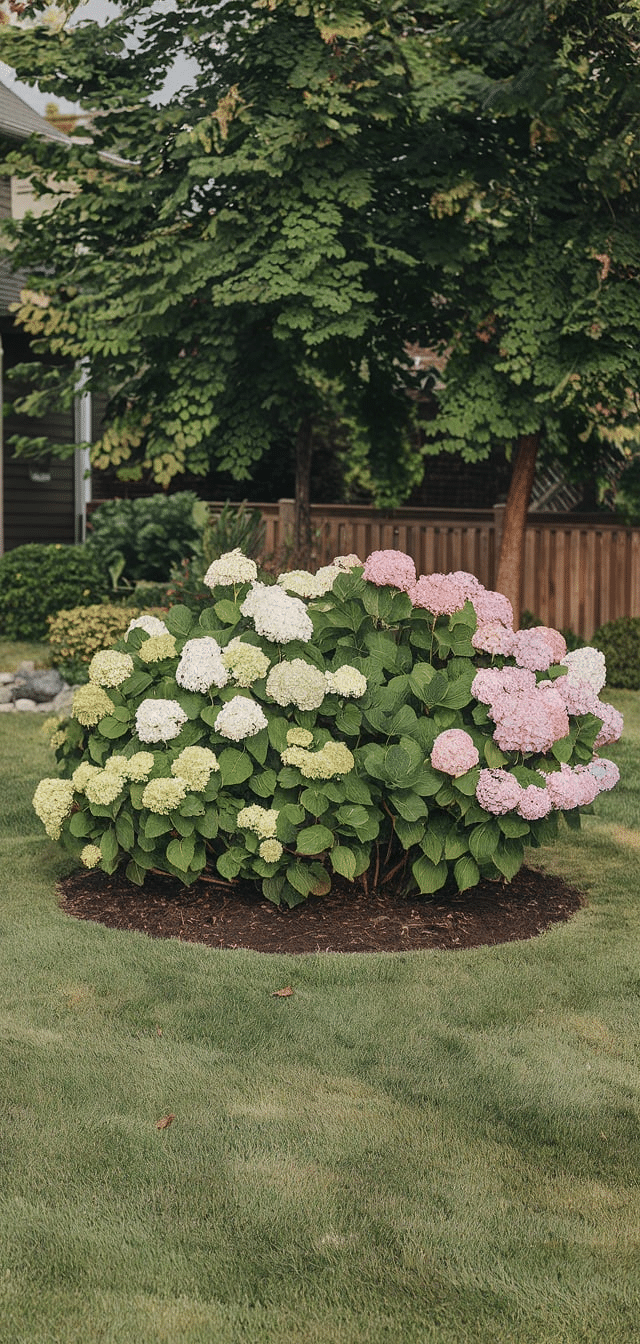
Install a hydrangea-focused island bed in the middle of your front lawn for symmetry and structure.
Tips:
- Use taller panicle hydrangeas like Phantom or Vanilla Strawberry
- Ring the bed with dwarf grasses or annuals for edging
- Install a drip irrigation line for even watering
10. Formal Entry Flanked with Hydrangea Landscaping
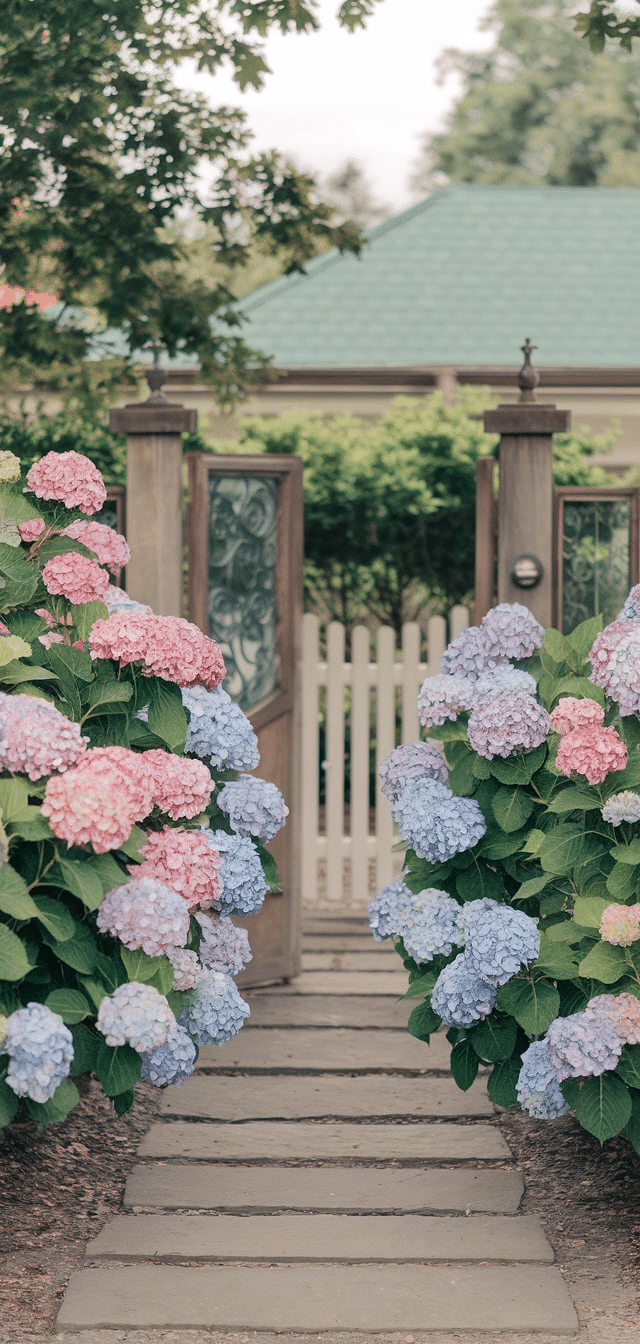
Plant matched hydrangea Landscaping pairs on either side of your front steps or walkway to enhance symmetry and elegance.
Tips:
- Incrediball or Limelight cultivars are excellent for bold, upright form
- Prune to keep height in check with the surrounding architecture
- Add uplighting for night-time impact
9. Cottage-Style Hydrangea Landscaping and Perennials
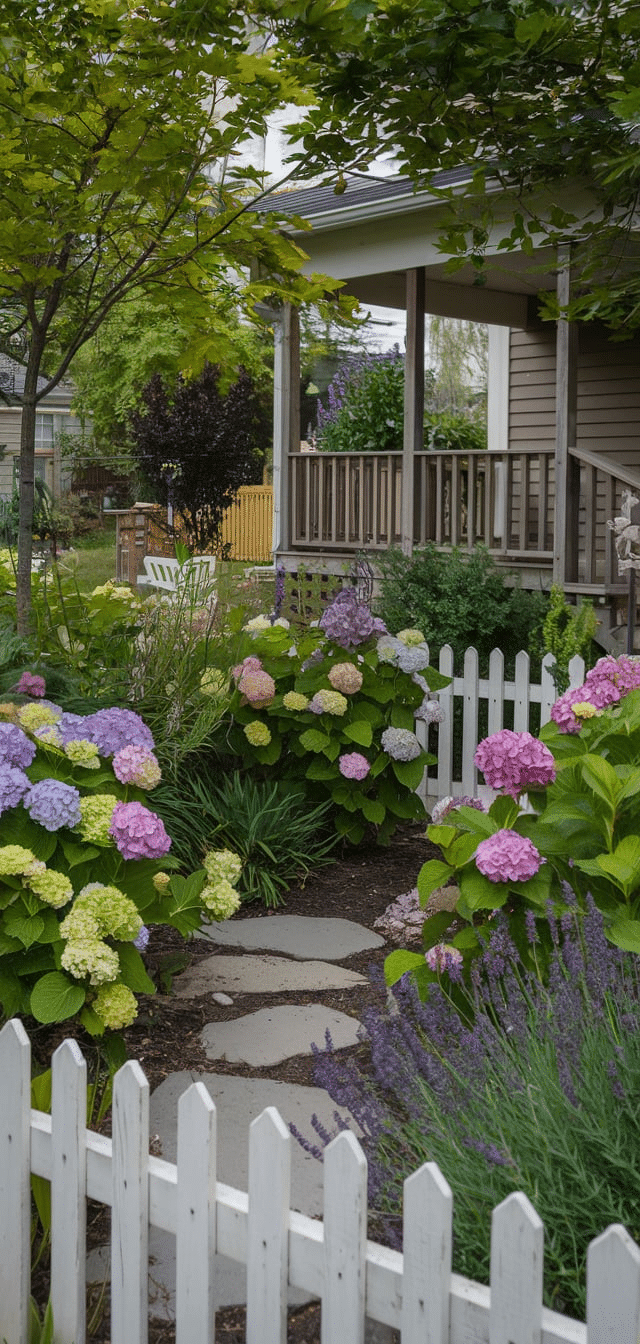
Incorporate hydrangea Landscaping into a sprawling bed of peonies, daisies, and salvia for a relaxed yet vibrant display.
Tips:
- Use pink or blue mophead hydrangeas for color harmony
- Layer heights, hydrangeas at the midlevel
- Let plants spill over curved borders for a soft, romantic effect
8. Hydrangea Landscaping Pathway Lining
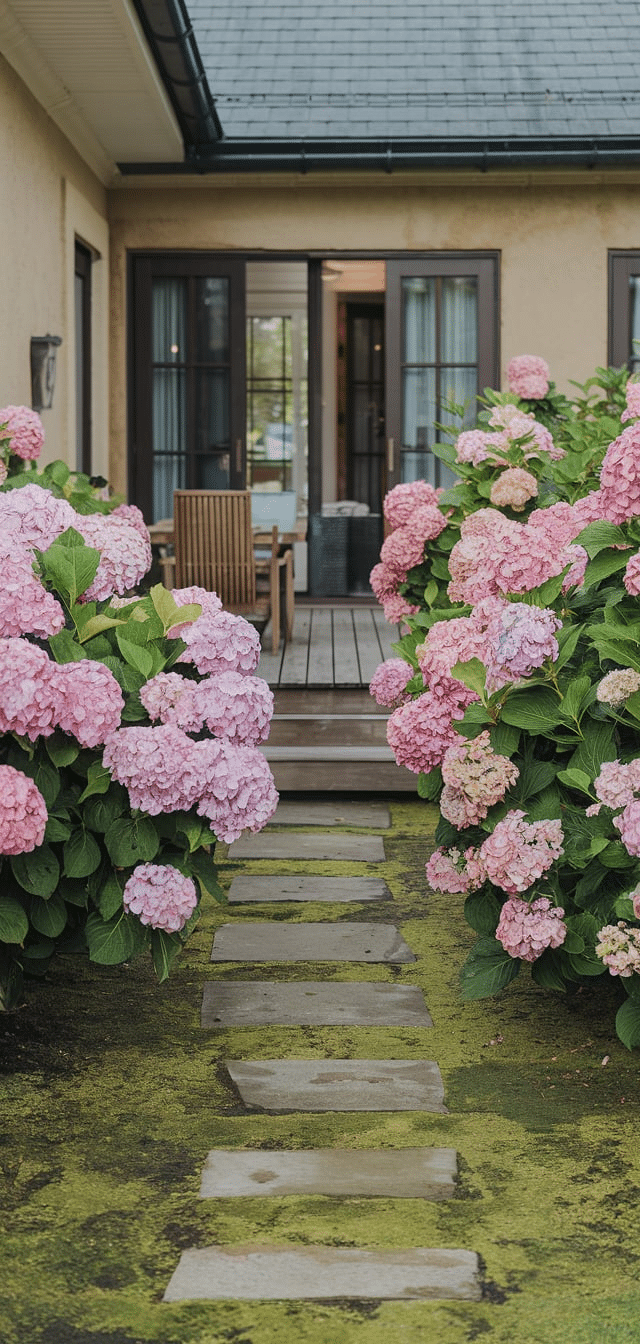
Border a meandering garden path or stone walkway with blooming hydrangea Landscaping for a breathtaking corridor.
Tips:
- Alternate between Annabelle and Little Quick Fire varieties
- Install stepping stones to minimize foot traffic near root zones
- Stagger plantings to avoid rigid uniformity
7. Tiered Hydrangea Terraces on Sloped Front Yards
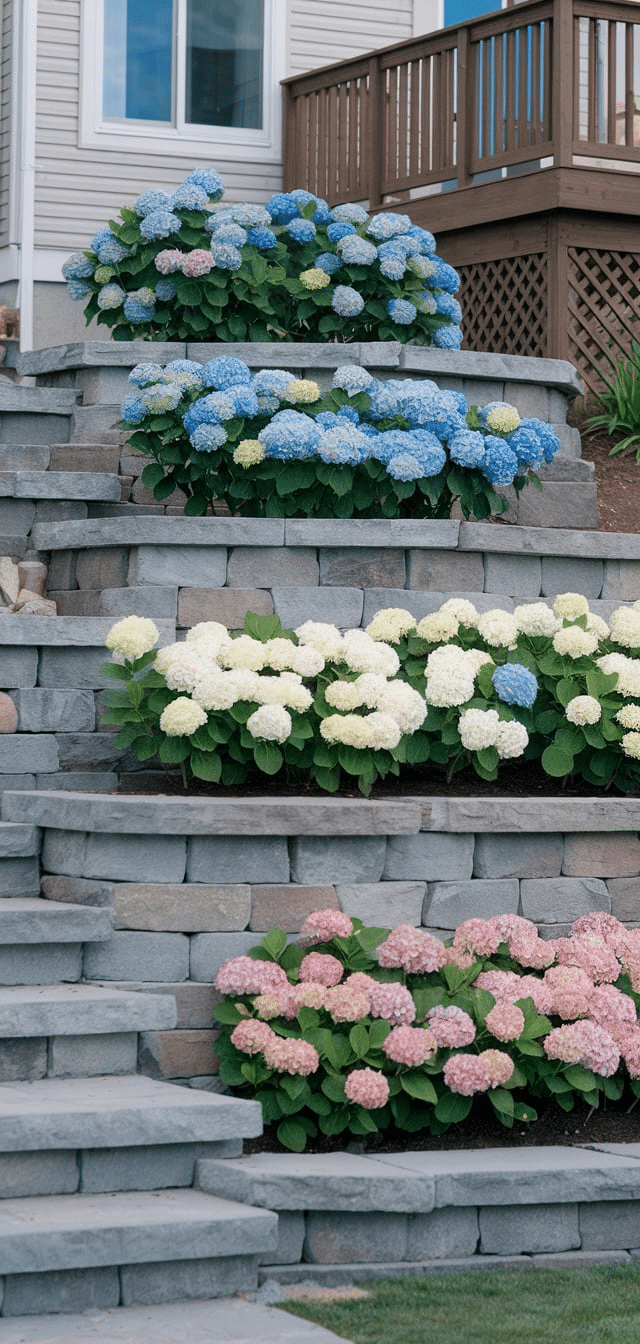
If your front yard has a slope, use terracing and hydrangeas to manage elevation while beautifying the terrain.
Tips:
- Use retaining walls with built-in beds
- Mix colors across tiers to create visual layers
- Ensure proper drainage to prevent root rot
6. Hydrangea + Evergreen Combo for Year-Round Appeal
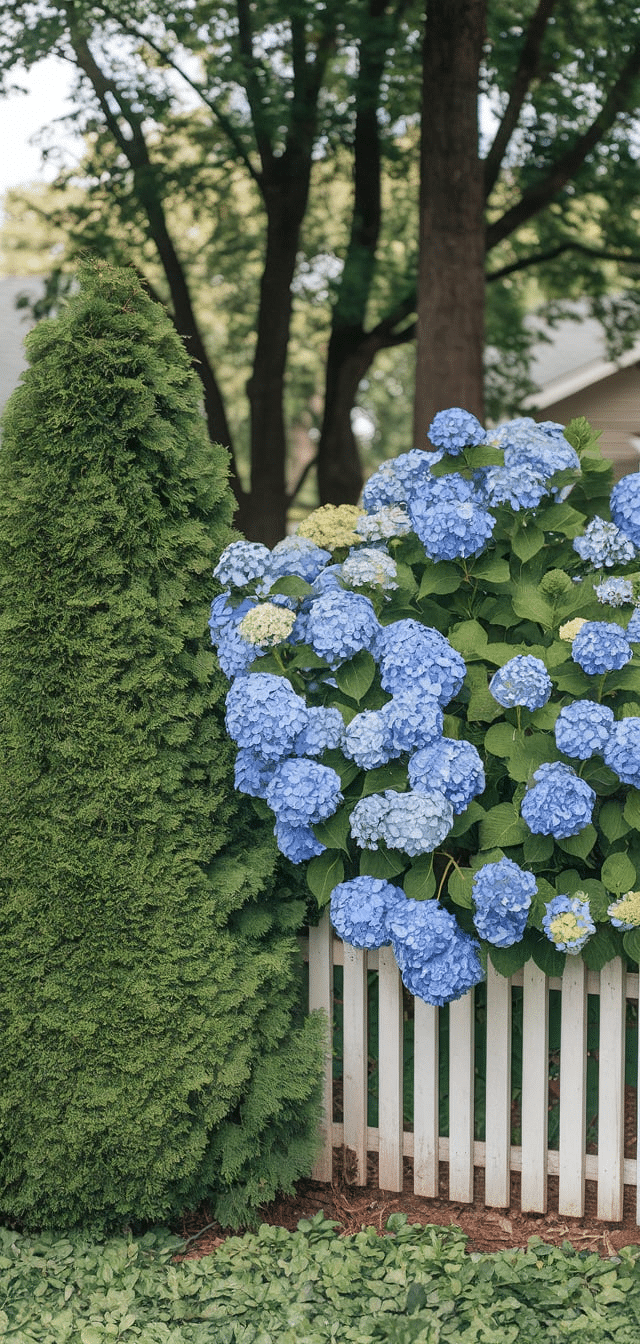
Plant hydrangeas alongside evergreen shrubs such as hollies, junipers, or yews to maintain winter interest.
Tips:
- Position hydrangeas in front to soften the evergreens
- Select evergreen shapes (columnar or mounded) that contrast with hydrangeas
- Consider adding white-blooming hydrangeas for timeless contrast
5. Color-Themed Hydrangea Garden for Cohesion
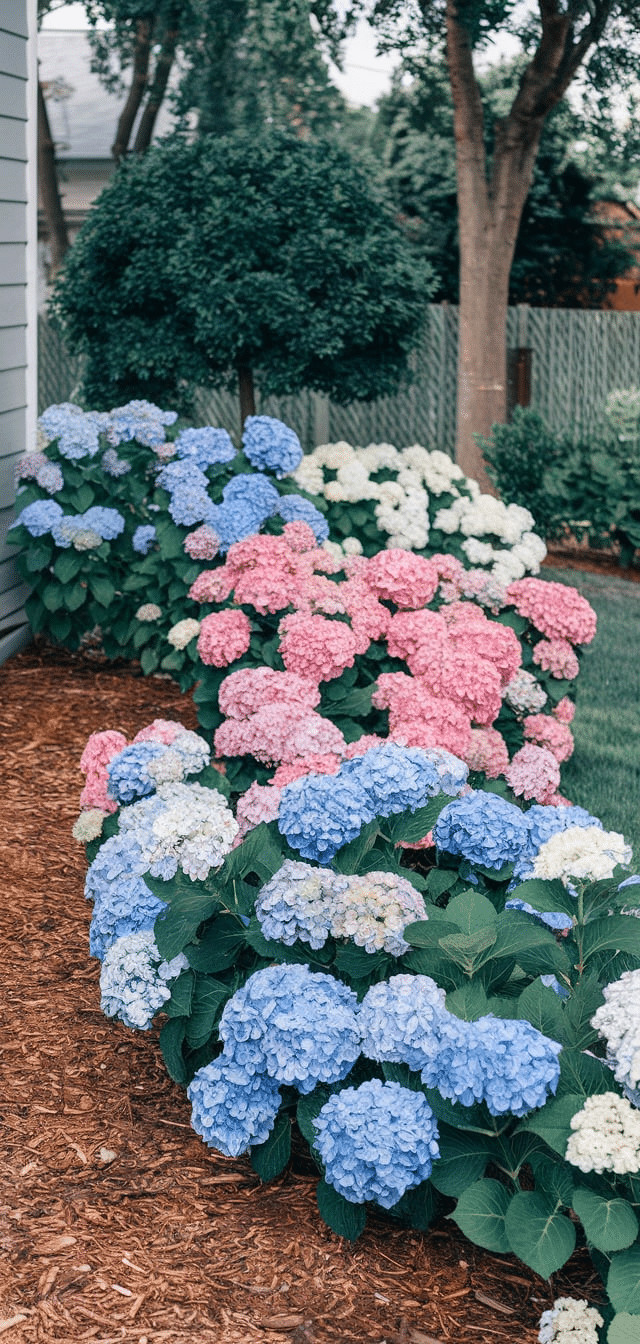
Stick to one hydrangea color family: blues, pinks, or whites for a calming and unified front yard design.
Tips:
- Modify soil pH to control Hydrangea macrophylla bloom color
- Acidic (pH < 6.0) = blue
- Alkaline (pH > 7.0) = pink
- Balance monochrome tones with contrasting green foliage
4. Driveway Border with Dwarf Hydrangeas
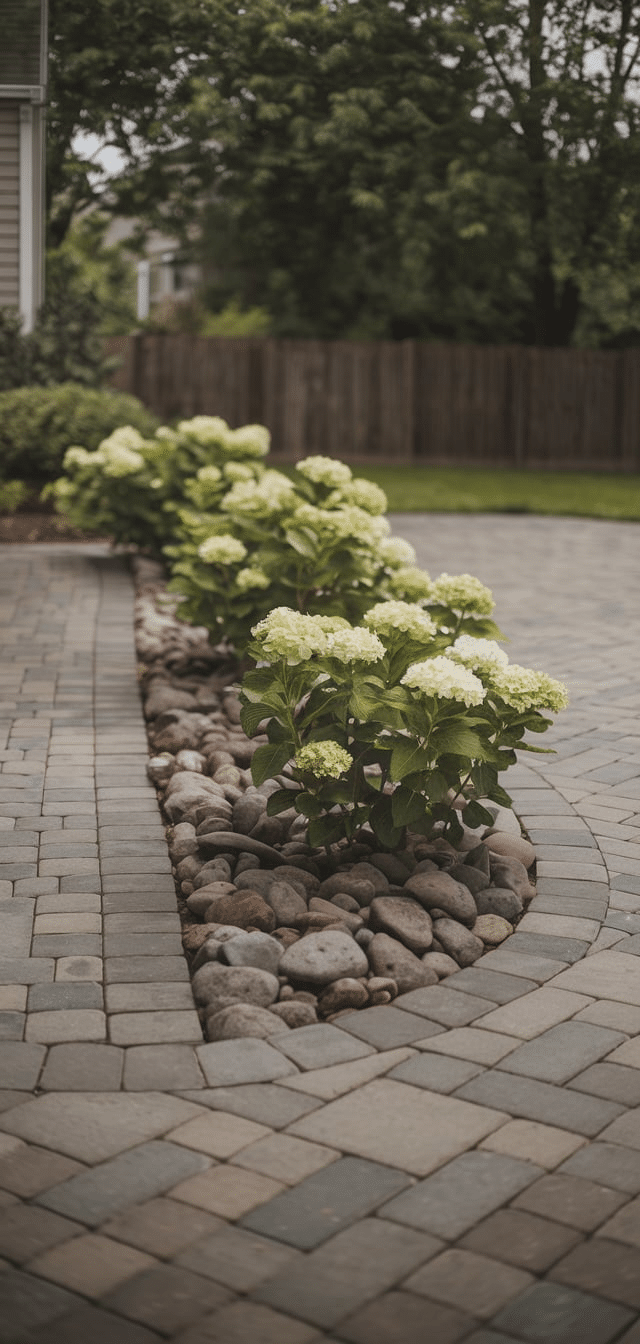
Line your driveway with compact hydrangea varieties to create a soft edge that doesn’t obstruct visibility.
Tips:
- Choose varieties like Tiny Tuff Stuff or Little Lime Punch
- Space plants uniformly for symmetry
- Use black mulch or gravel for a clean base
3. Hydrangea Entry Archway or Trellis
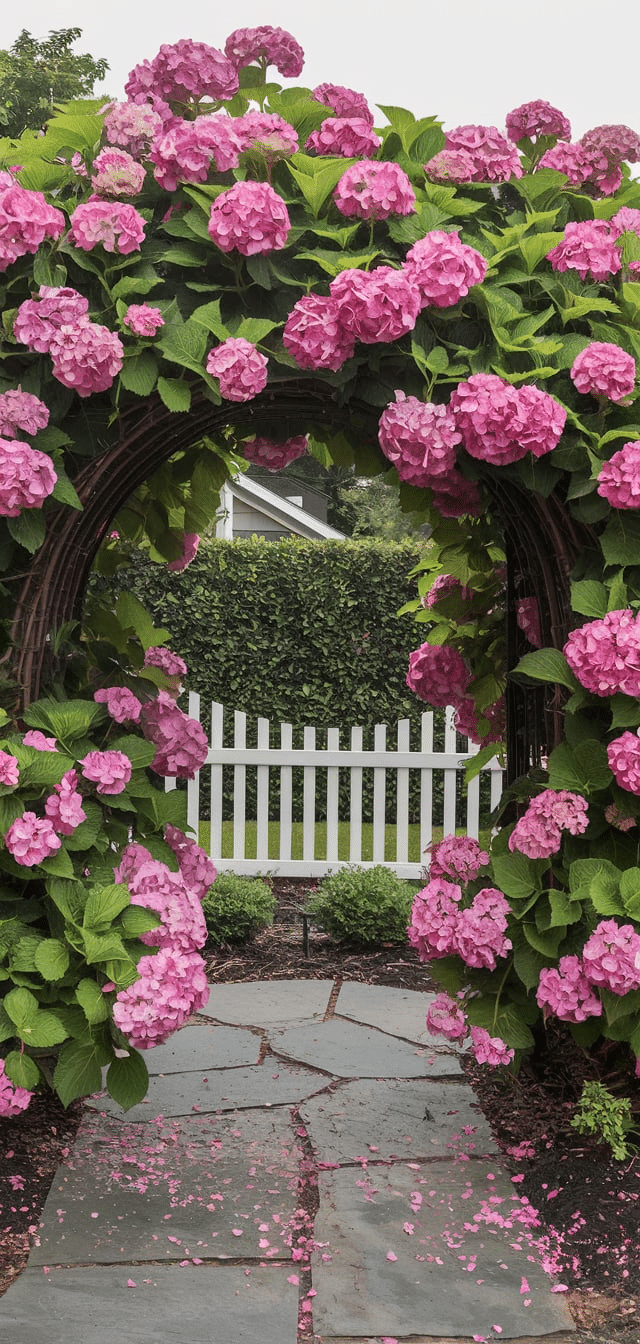
Train climbing hydrangea (Hydrangea anomala petiolaris) over a wrought-iron arch at the entrance of your yard for a dramatic welcome.
Tips:
- Provide sturdy vertical support
- Prune regularly to maintain structure
- Underplant with groundcover for complete visual harmony
2. Seasonal Bed Rotation with Hydrangea Focal Point
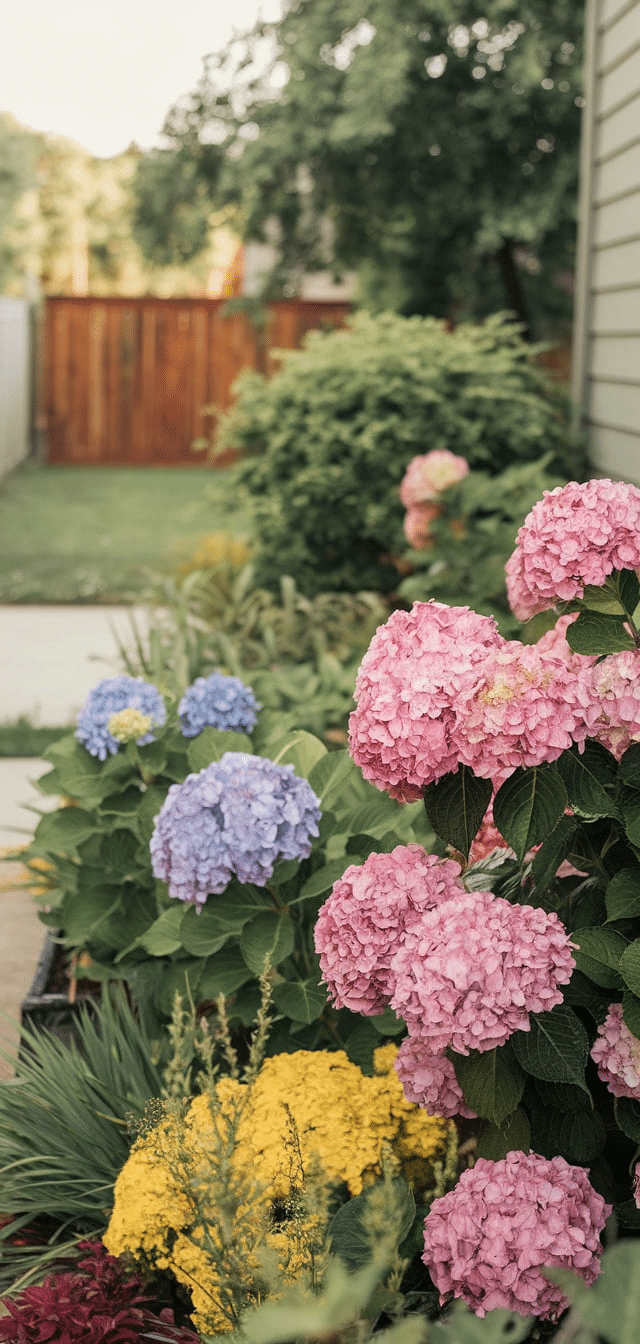
Design a large front bed where hydrangeas remain constant while seasonal plants rotate around them.
Tips:
- Use perennials like daylilies, tulips, or asters around hydrangeas
- Keep hydrangeas in the back row for consistency
- Apply compost annually to support mixed planting health
1. Corner Lot Showpiece with Mixed Hydrangea Massing
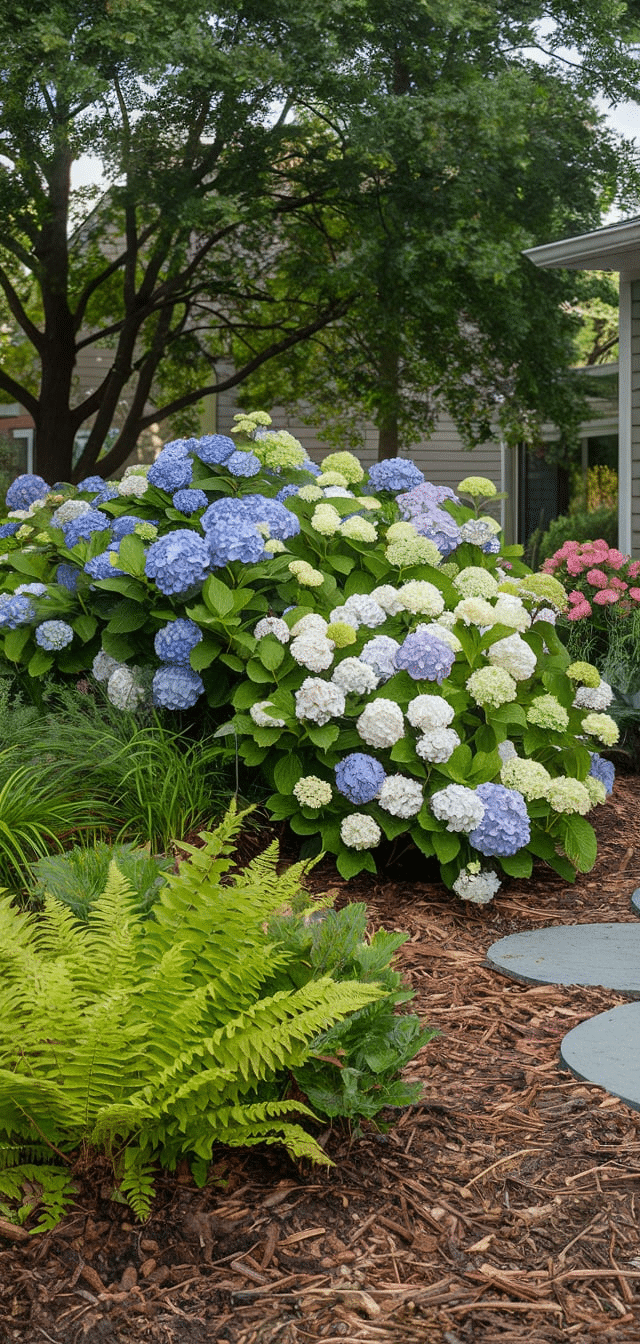
Fill the corner of your yard with a dense planting of mixed hydrangeas for an eye-catching display from every direction.
Tips:
- Include varieties with differing bloom times
- Space generously to allow airflow
- Add benches or a birdbath to enhance the garden as a neighborhood feature
Conclusion
Strategically placed hydrangeas in the front yard provide enduring charm and value. By following these professionally curated ideas and tips, your landscape can achieve both structure and softness, creating unforgettable curb appeal season after season.





